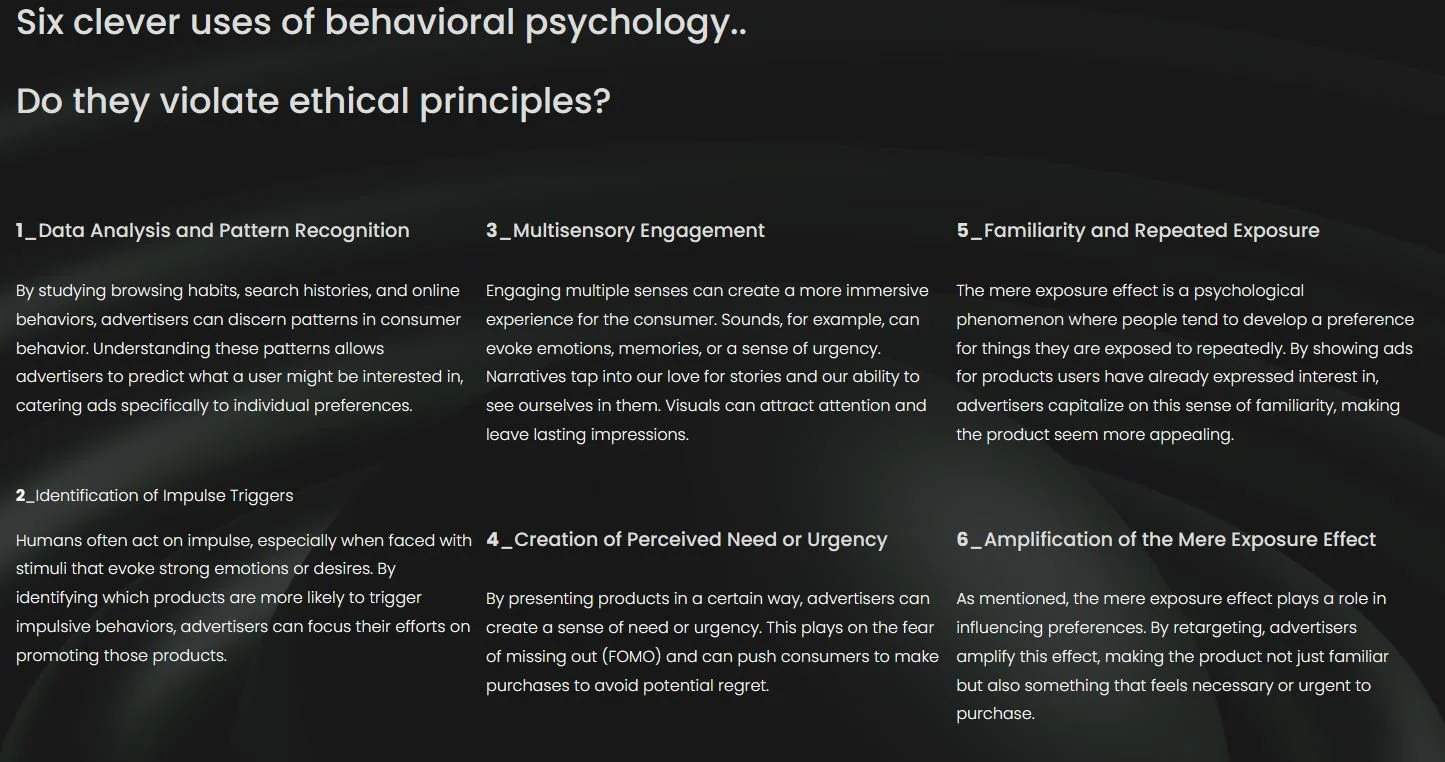Sources:
Modern advertising techniques leverage extensive data analytics provided by technology companies.
Source: Provost, F., & Fawcett, T. (2013). Data science and its relationship to big data and data-driven decision making. Big data, 1(1), 51-59.
This data helps advertisers identify products that consumers are prone to purchase impulsively.
Source: Vohs, K. D., & Faber, R. J. (2007). Spent resources: Self‐regulatory resource availability affects impulse buying. Journal of Consumer Research, 33(4), 537-547.
Advertisers then craft compelling advertisements using strategic sounds, narratives, and visuals.
Source: Scott, L. M. (1994). The bridge from text to mind: Adapting reader-response theory to consumer research. Journal of Consumer Research, 21(3), 461-480.
... to influence consumers into making purchases they might not have originally intended.
Source: Tversky, A., & Kahneman, D. (1974). Judgment under Uncertainty: Heuristics and Biases. Science, 185(4157), 1124-1131. (This source discusses the concept of heuristics, which can relate to the idea of influencing decisions based on perceived need or urgency.)
One method advertisers use is 'retargeting,' where they display ads for products that users have previously viewed or searched for online.
Source: Lambrecht, A., & Tucker, C. (2013). When does retargeting work? Information specificity in online advertising. Journal of Marketing Research, 50(5), 561-576.
This repeated exposure can create a sense of familiarity or urgency.
Source: Bornstein, R. F. (1989). Exposure and affect: Overview and meta-analysis of research, 1968-1987. Psychological Bulletin, 106(2), 265.
While these sources touch on the concepts and principles mentioned, they might not address the exact phrasings or the full breadth of the points. They provide foundational knowledge and empirical evidence related to the broader principles of advertising and behavioral psychology.
